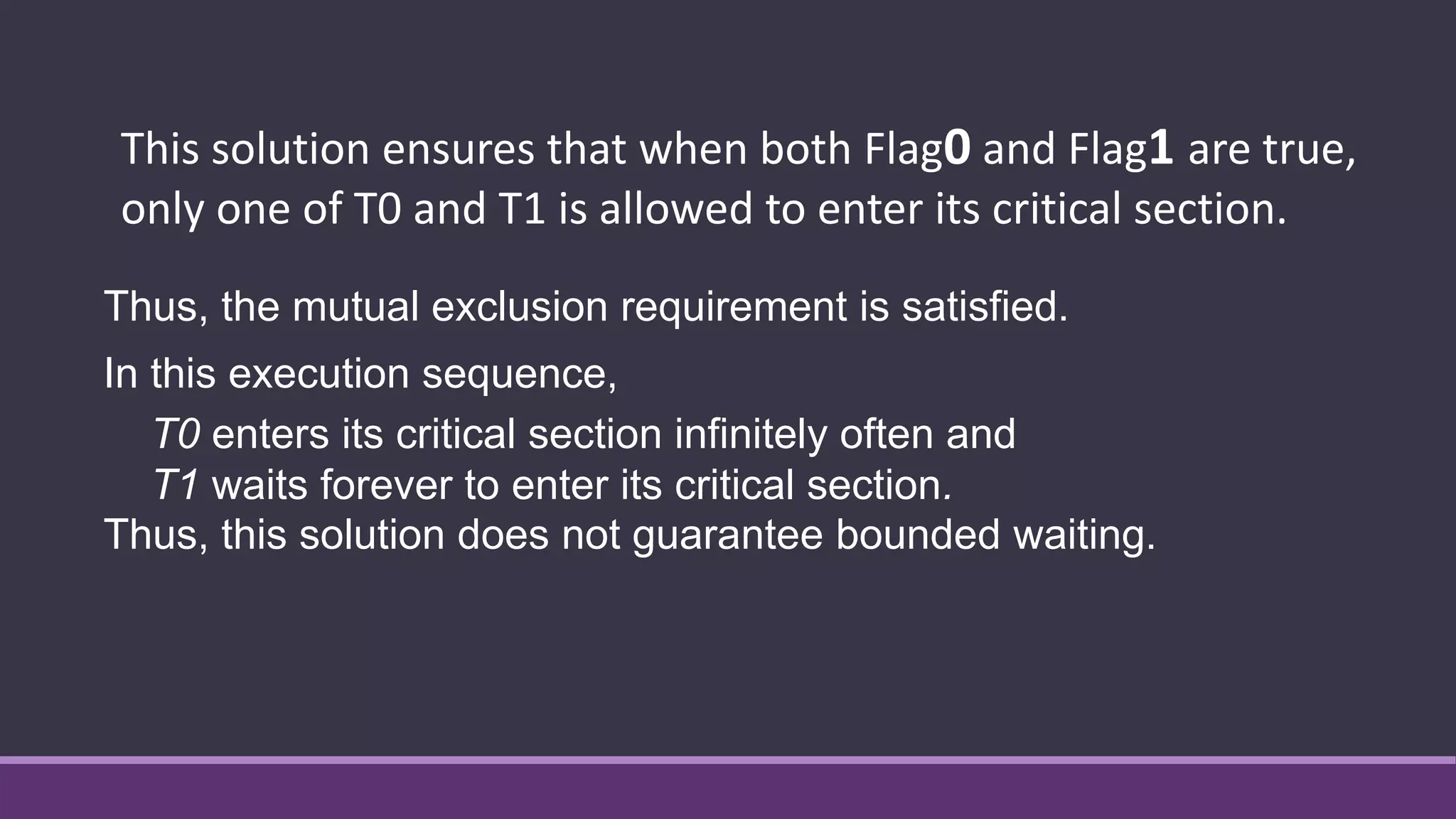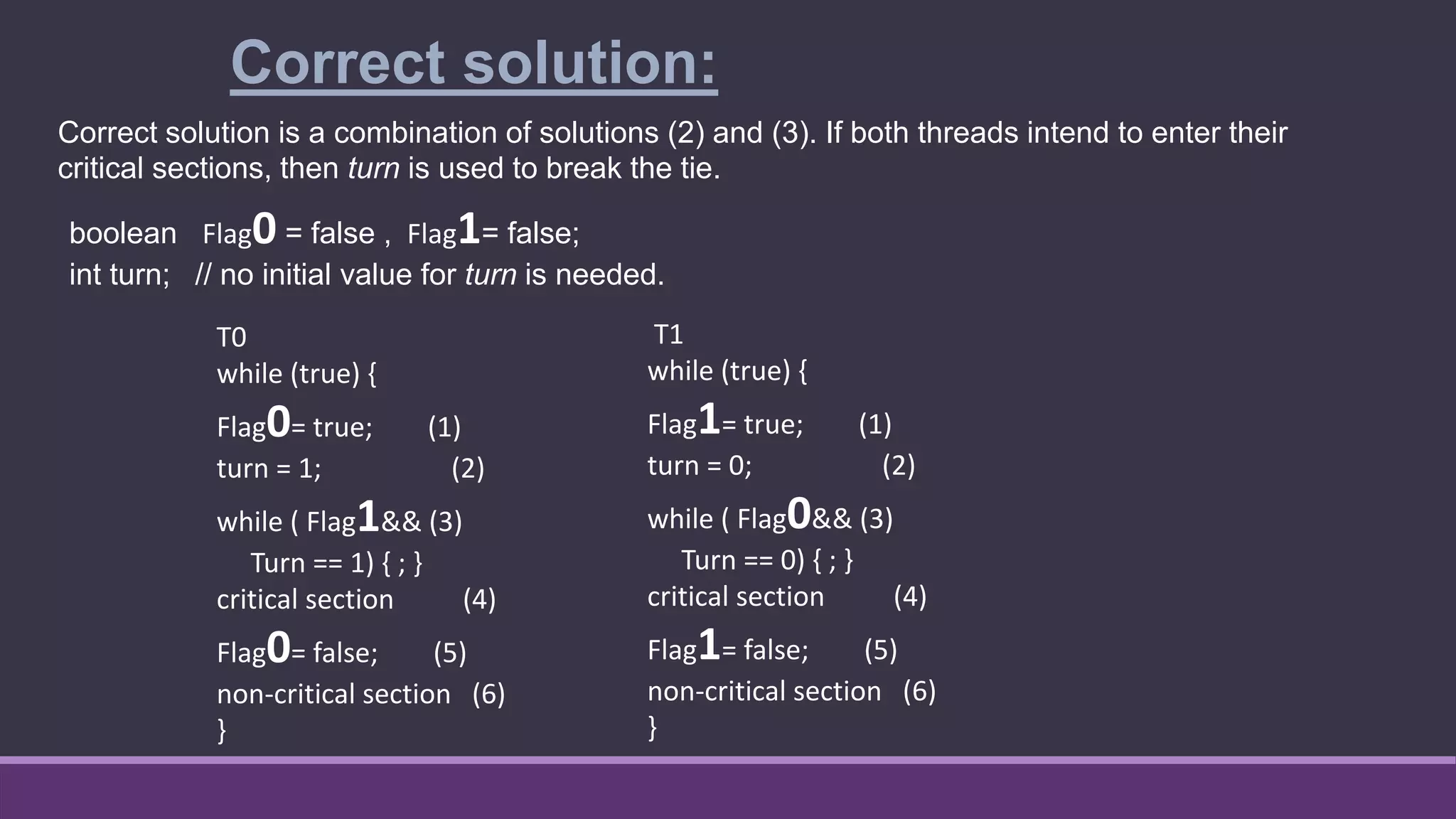The critical section problem refers to ensuring that at most one process can execute its critical section, a code segment that accesses shared resources, at any given time. There are three requirements for a correct solution: mutual exclusion, meaning no two processes can be in their critical section simultaneously; progress, ensuring a process can enter its critical section if it wants; and bounded waiting, placing a limit on how long a process may wait to enter the critical section. Early attempts to solve this using flags or a turn variable were incorrect as they did not guarantee all three requirements.

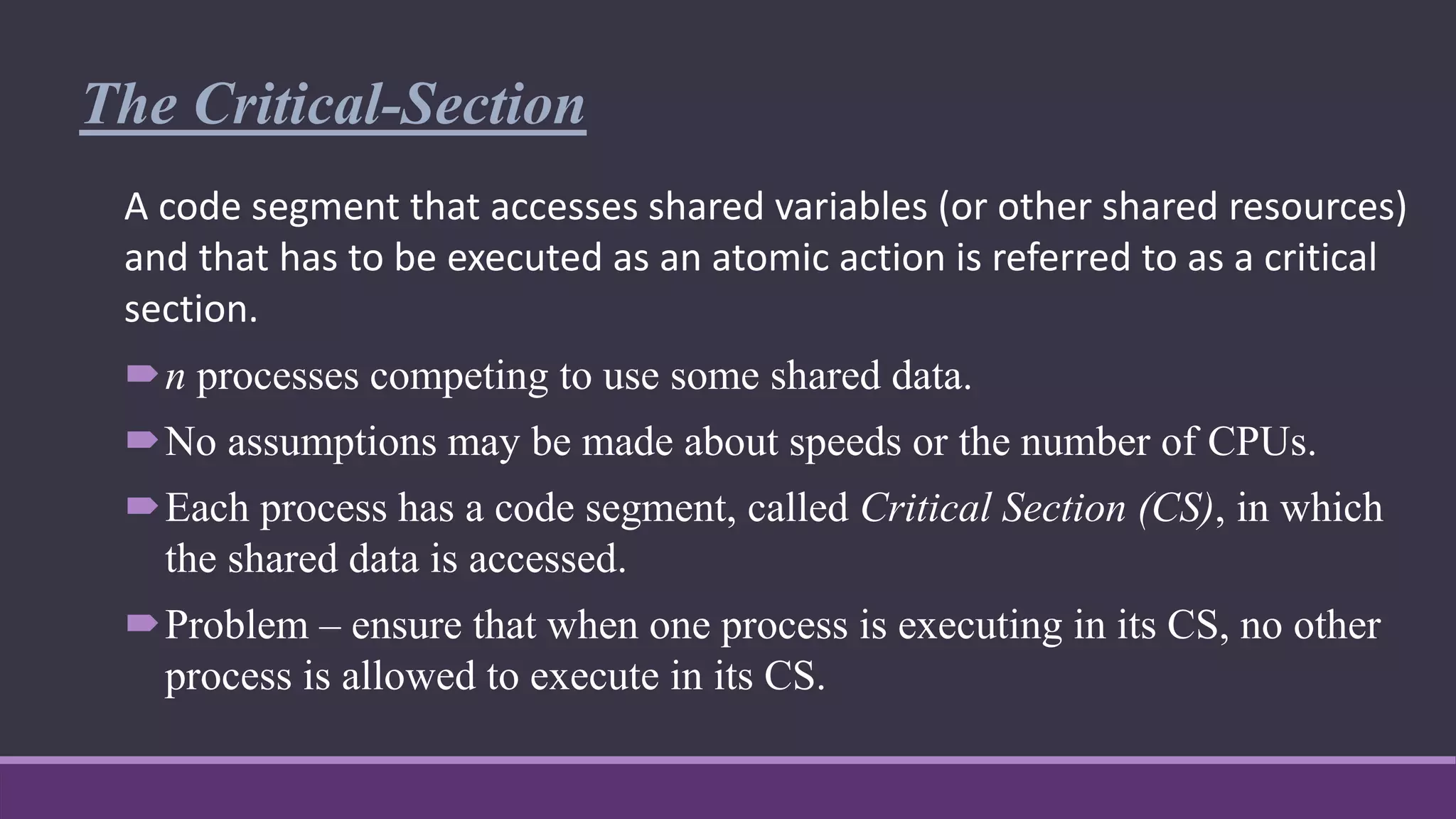

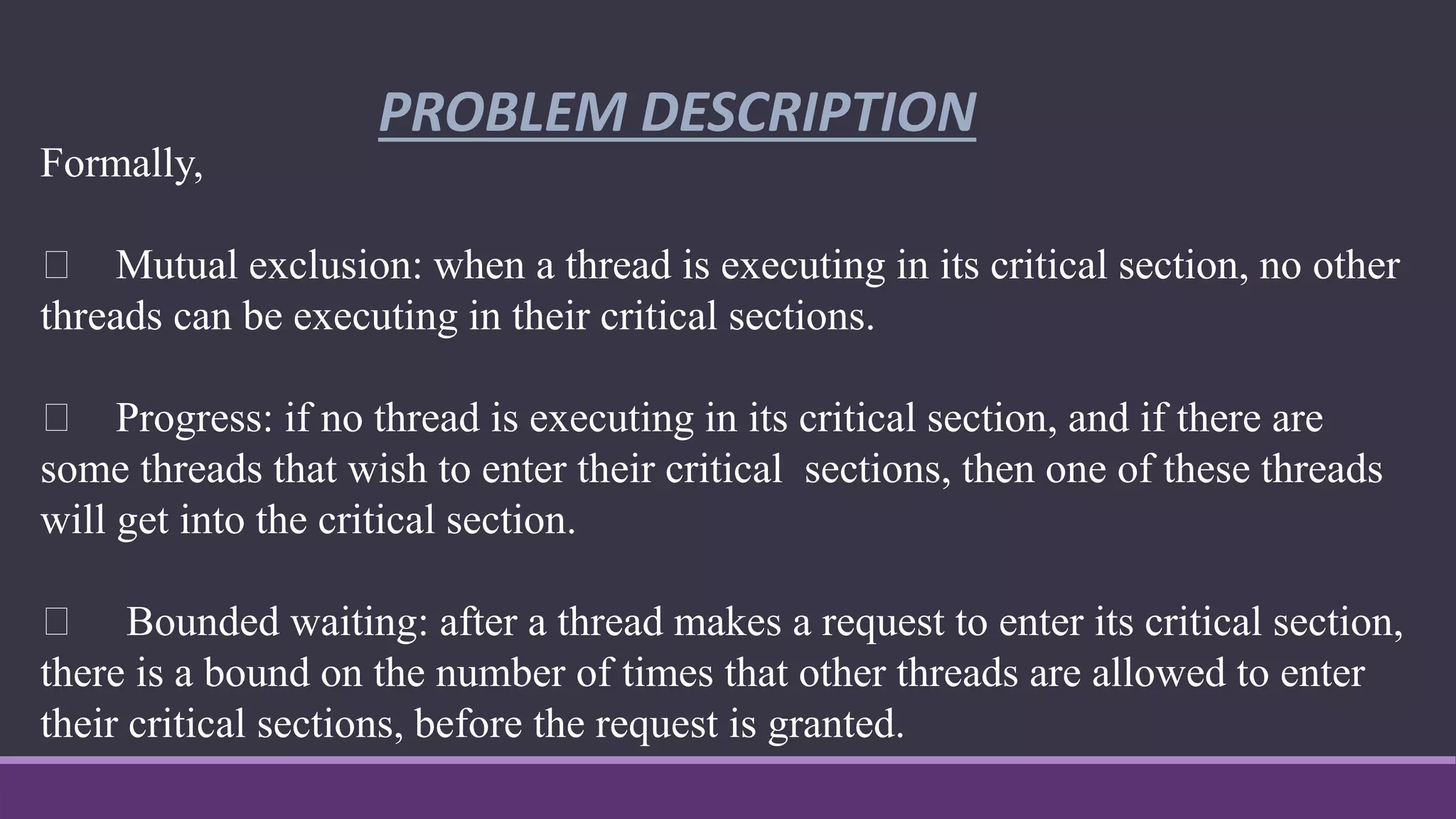
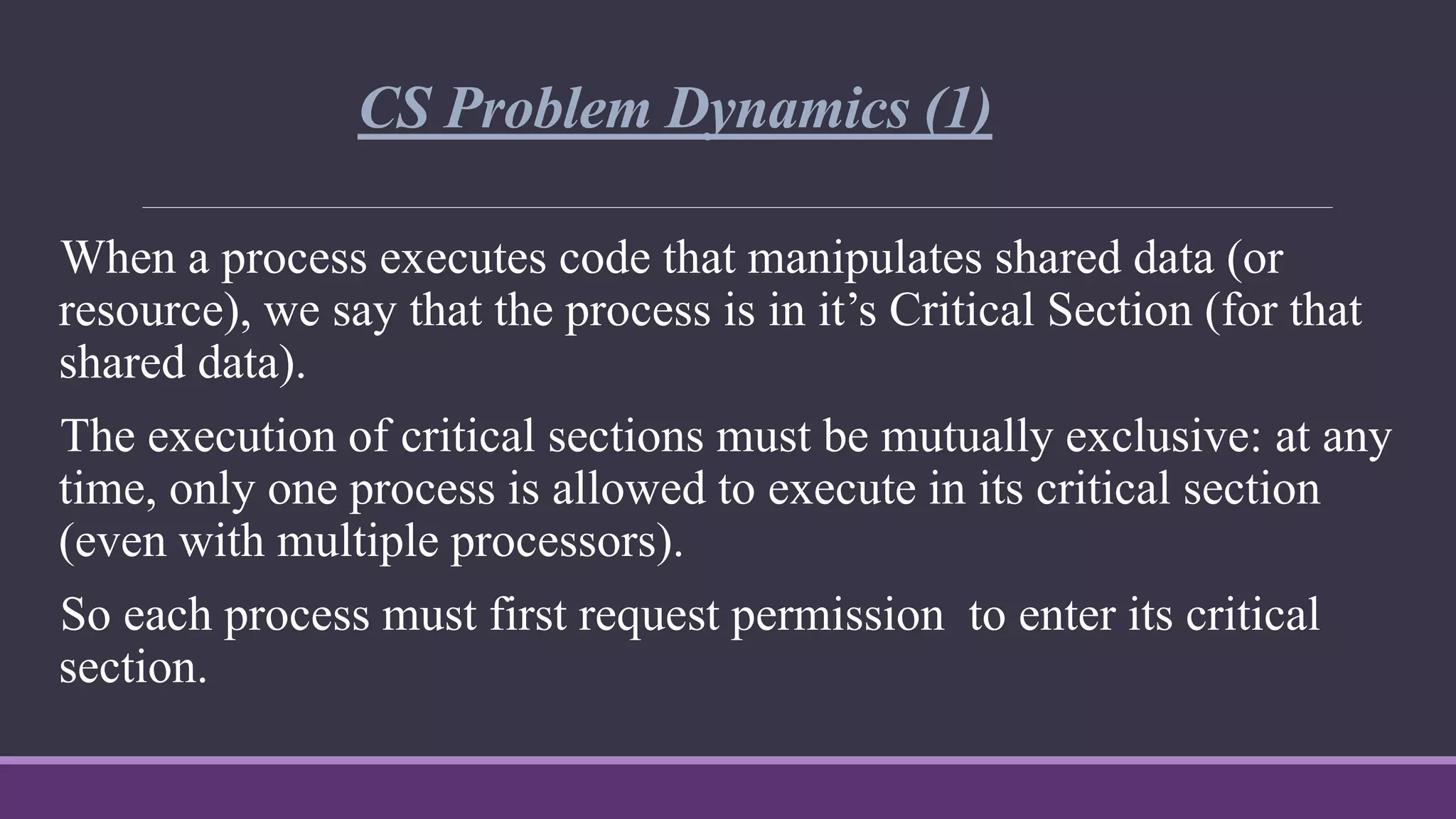

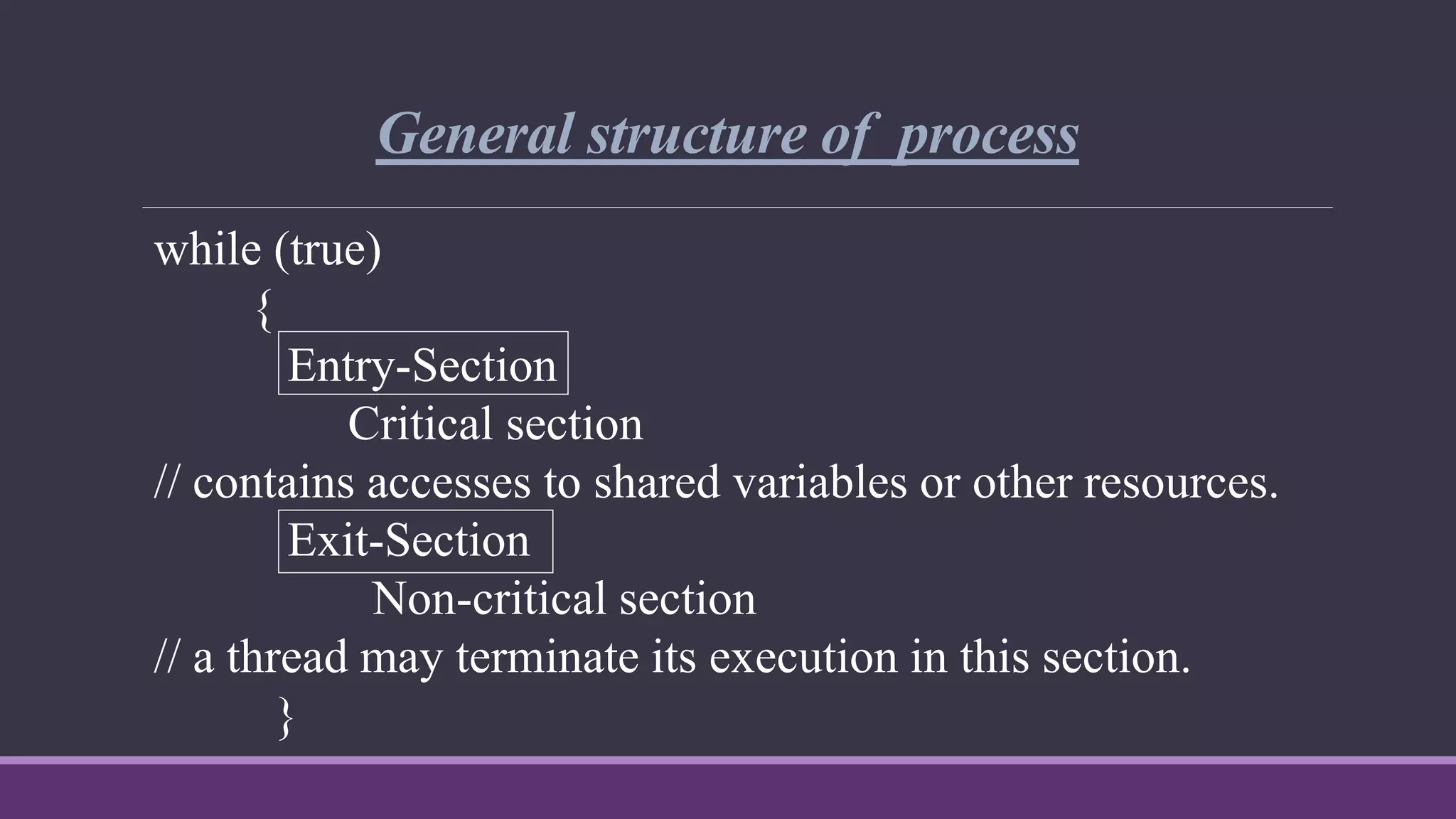
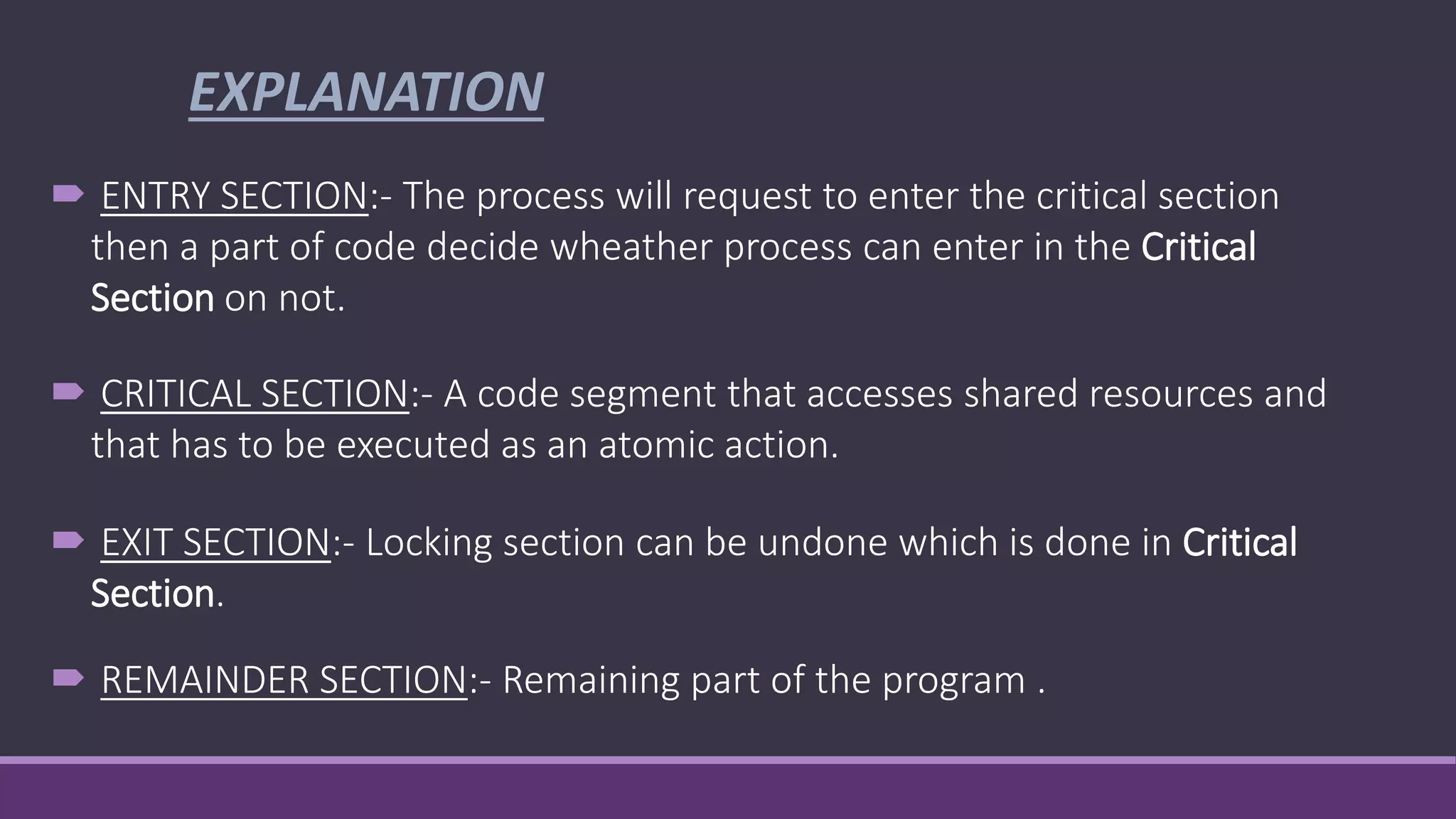
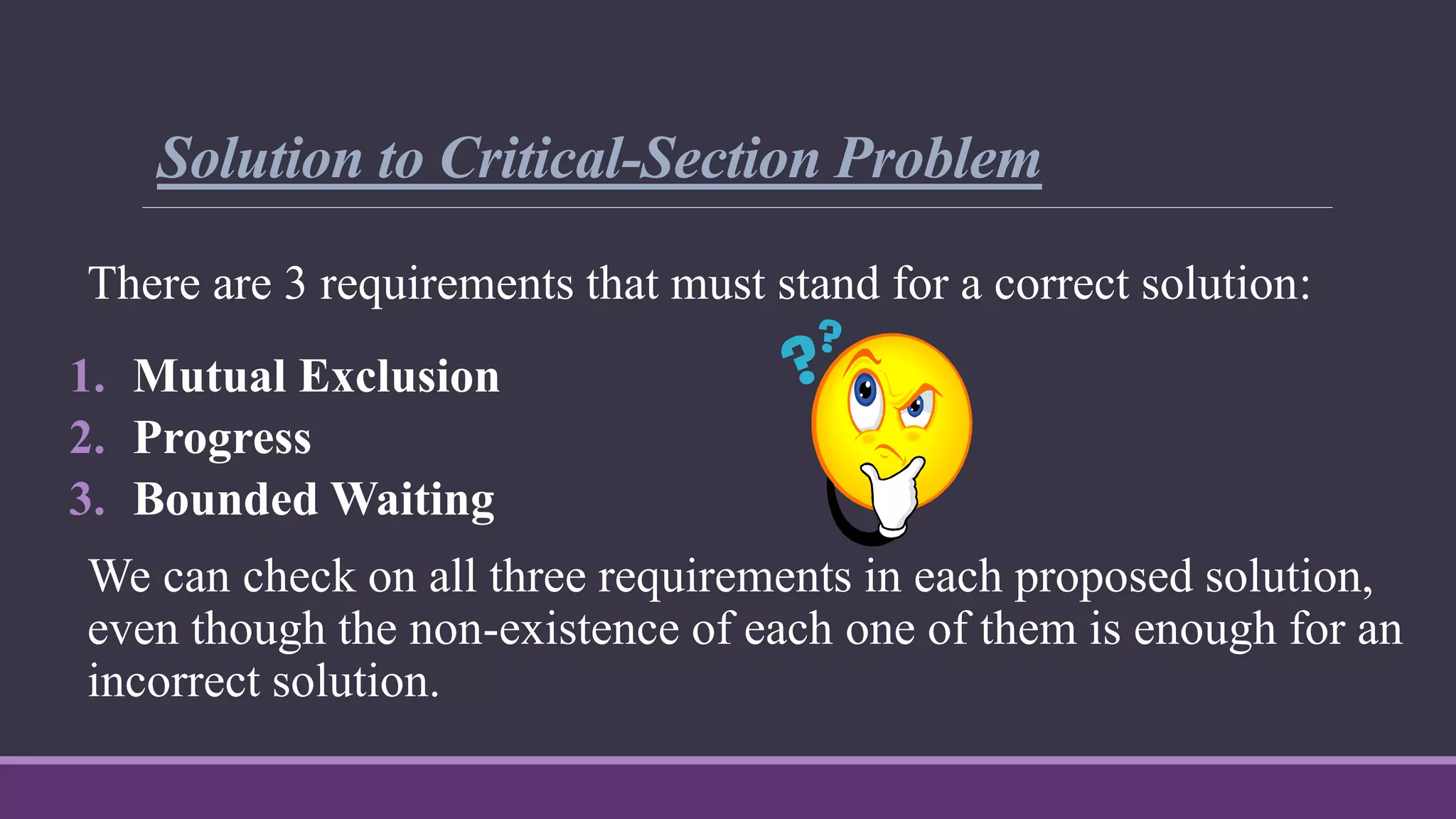
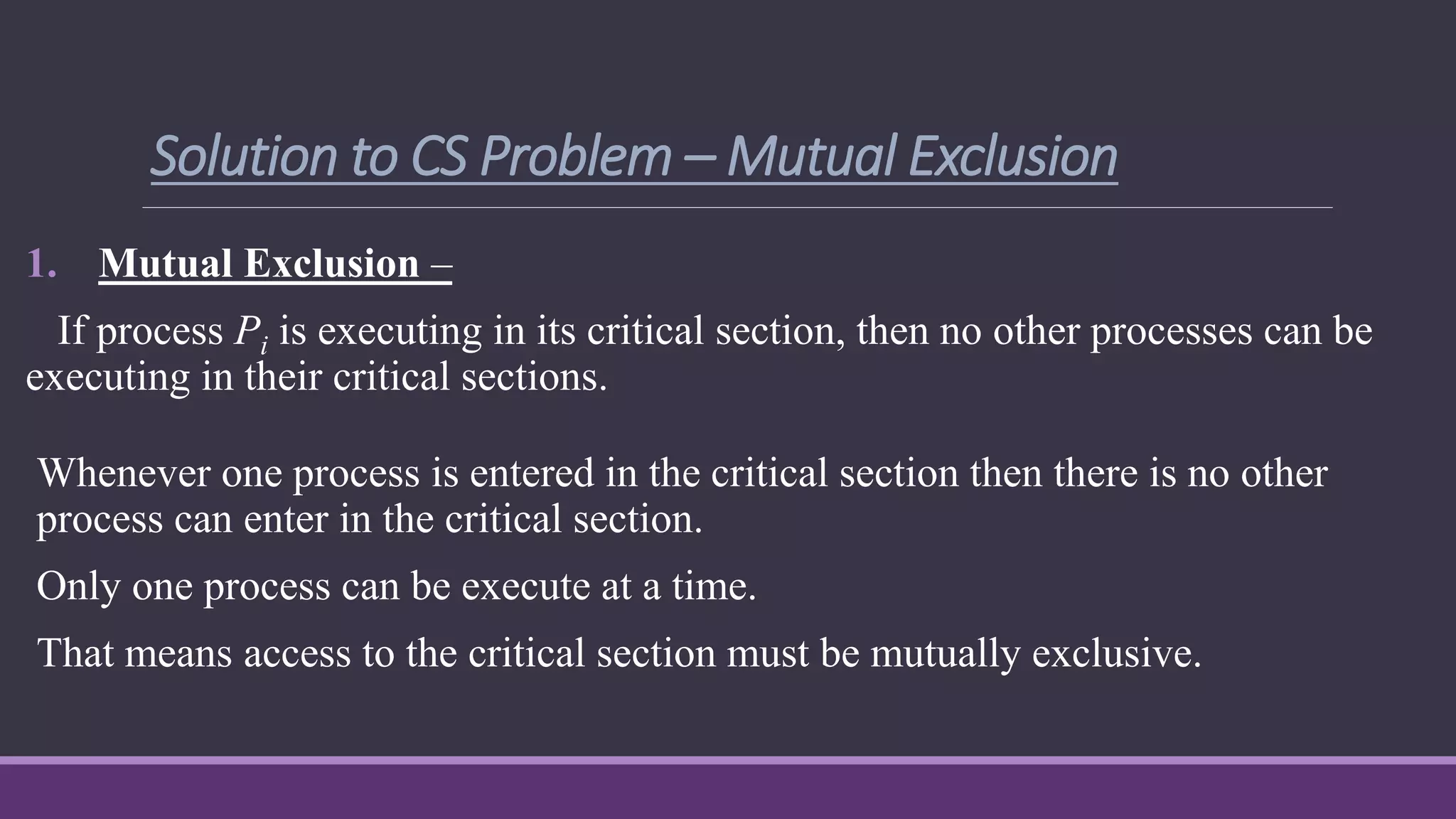
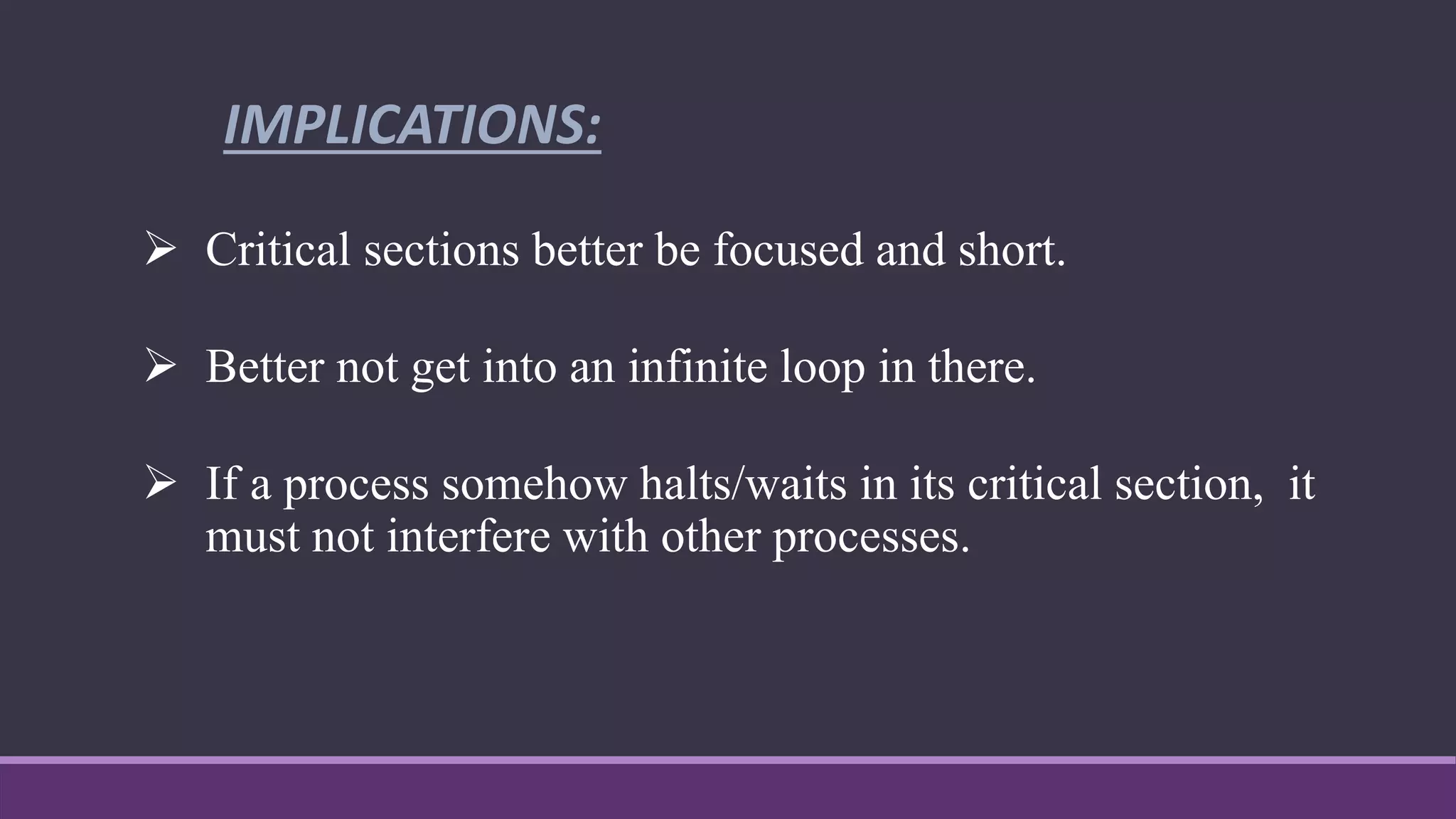
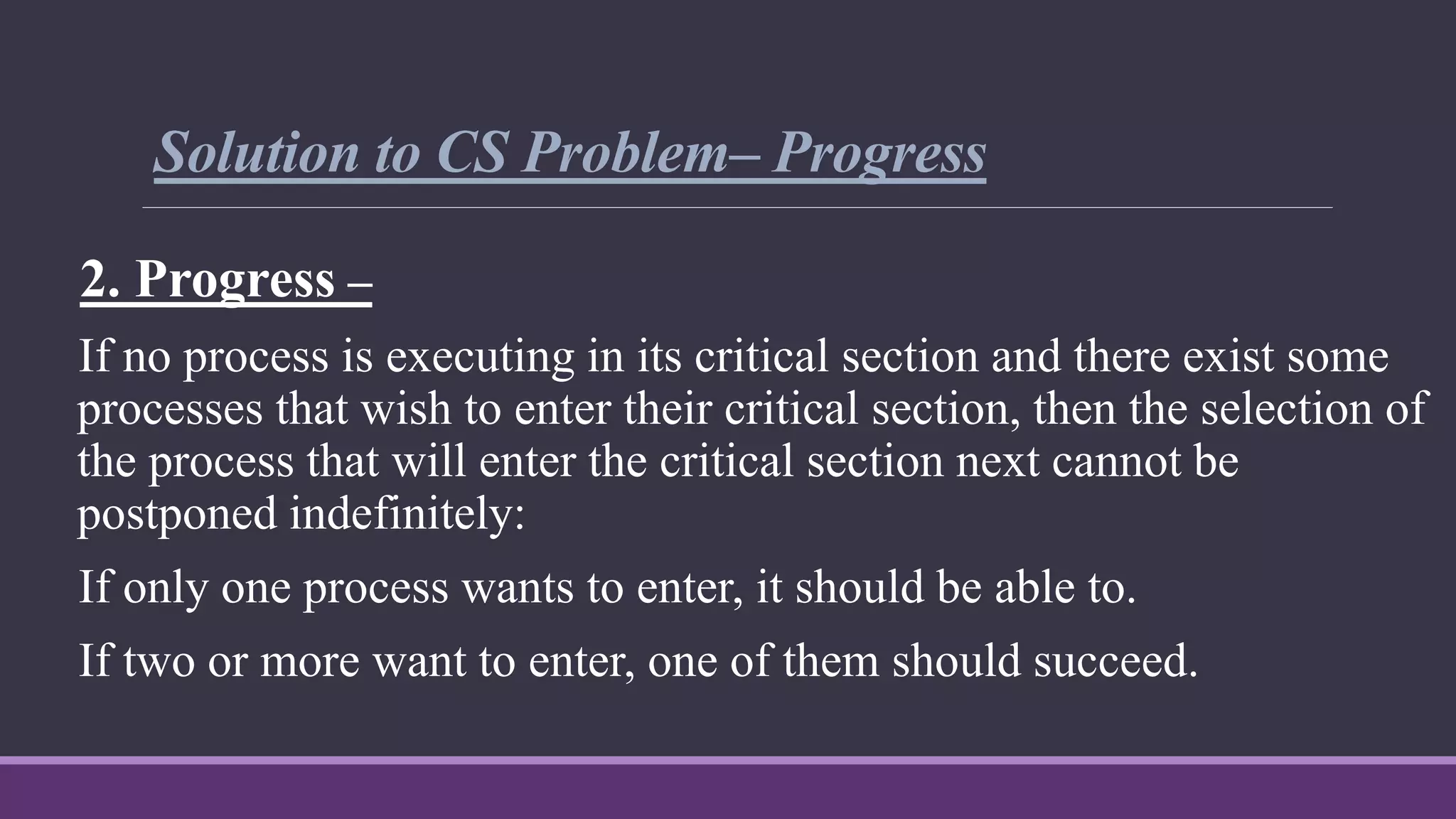
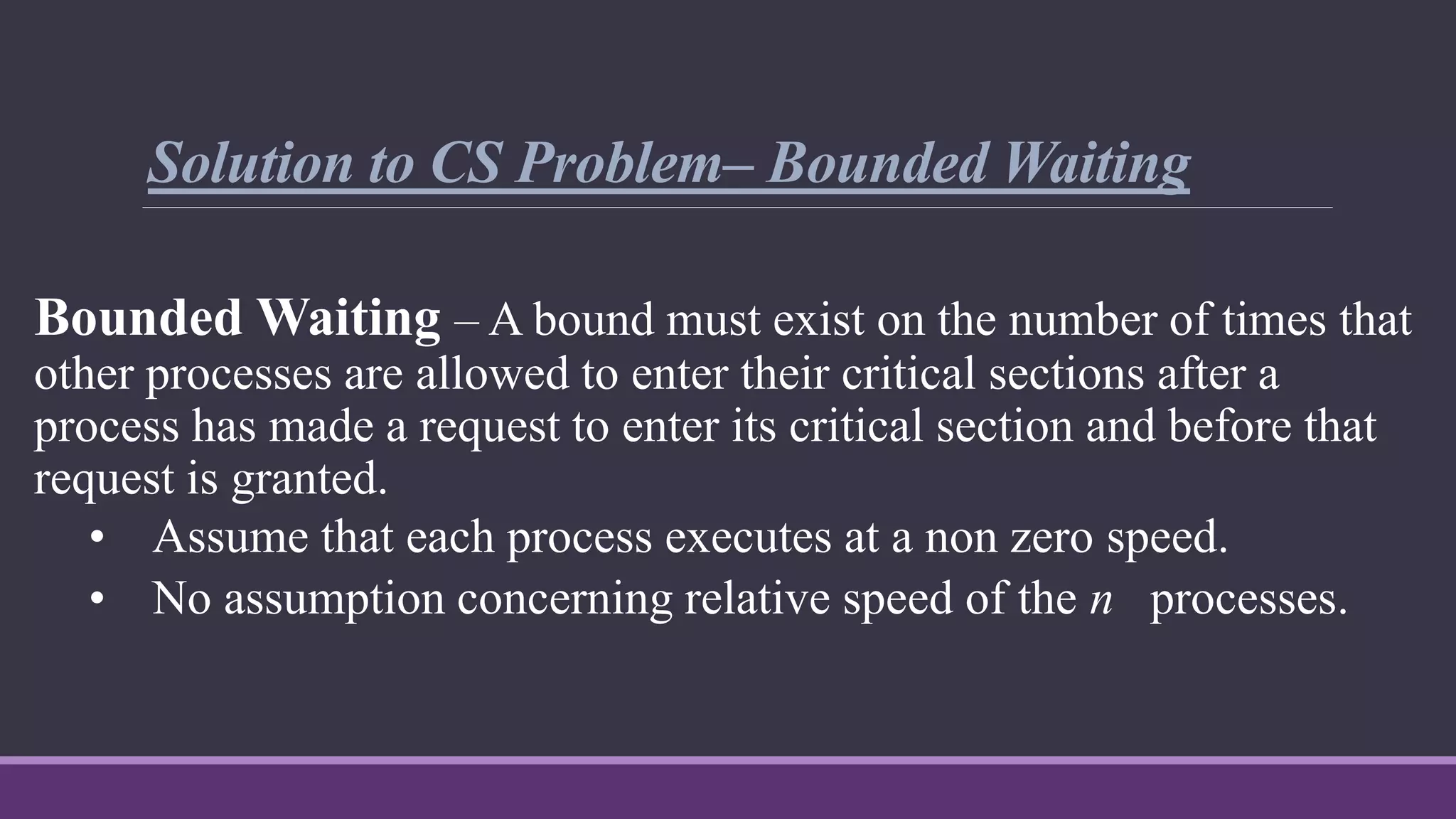
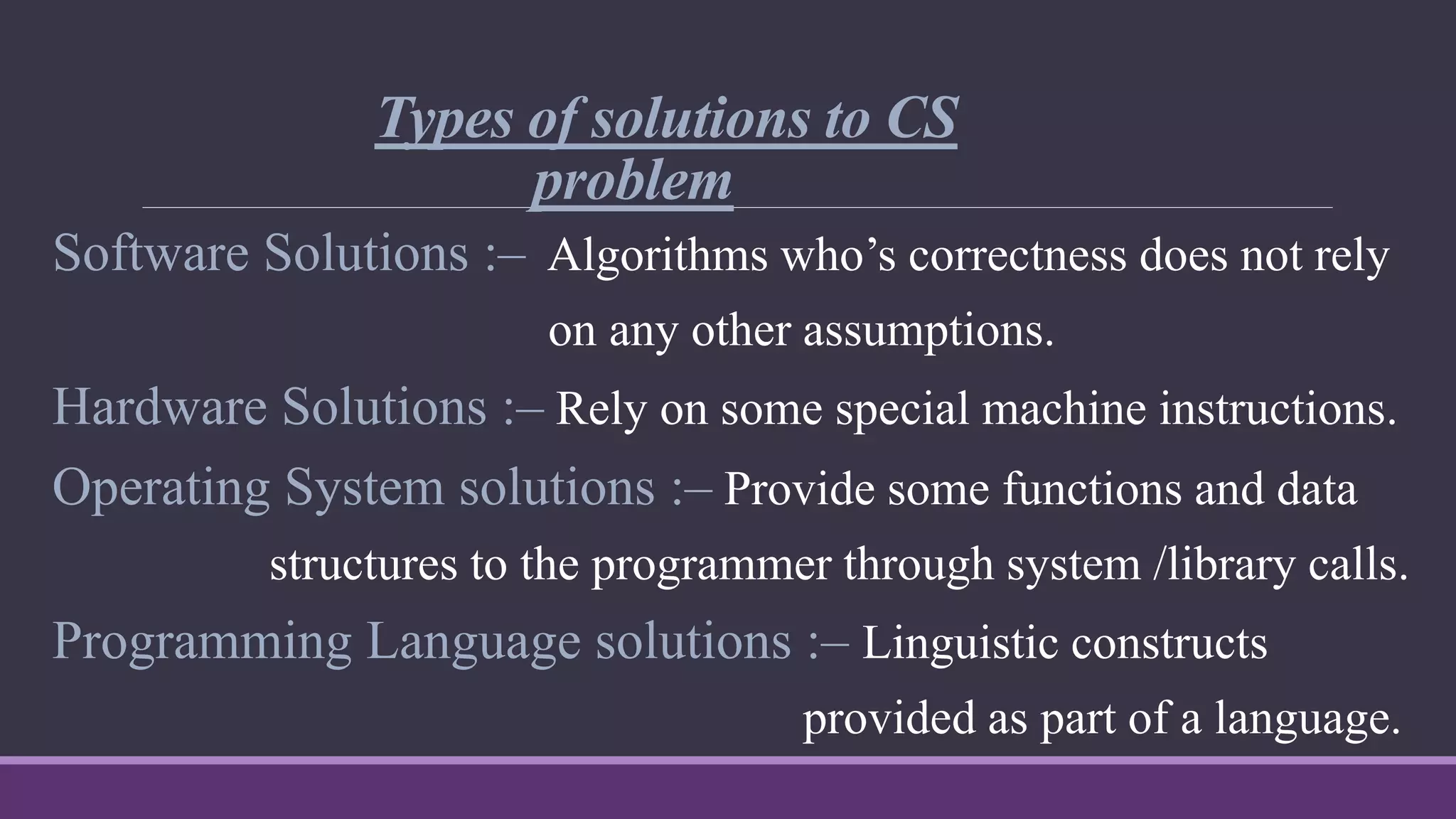
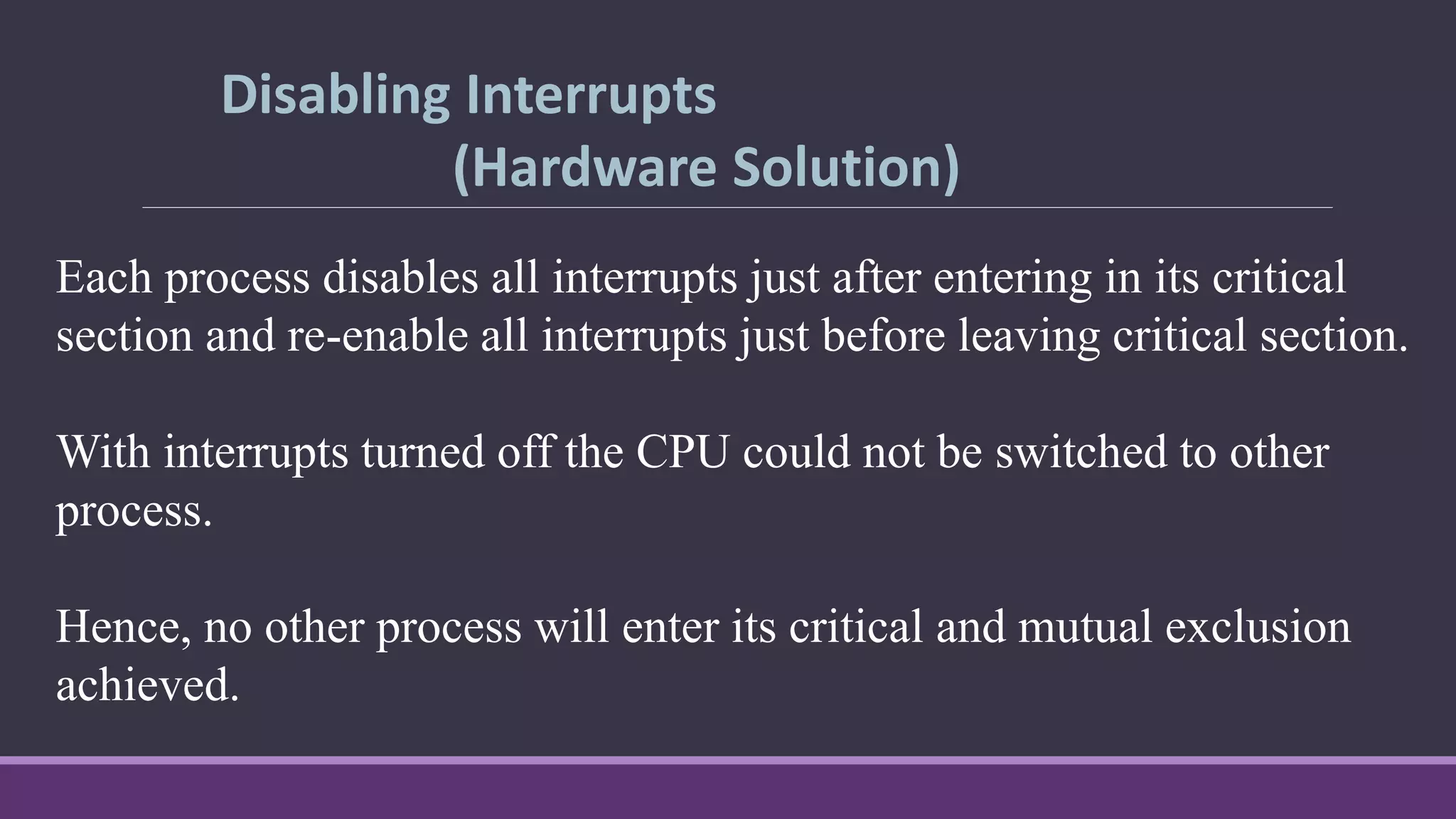
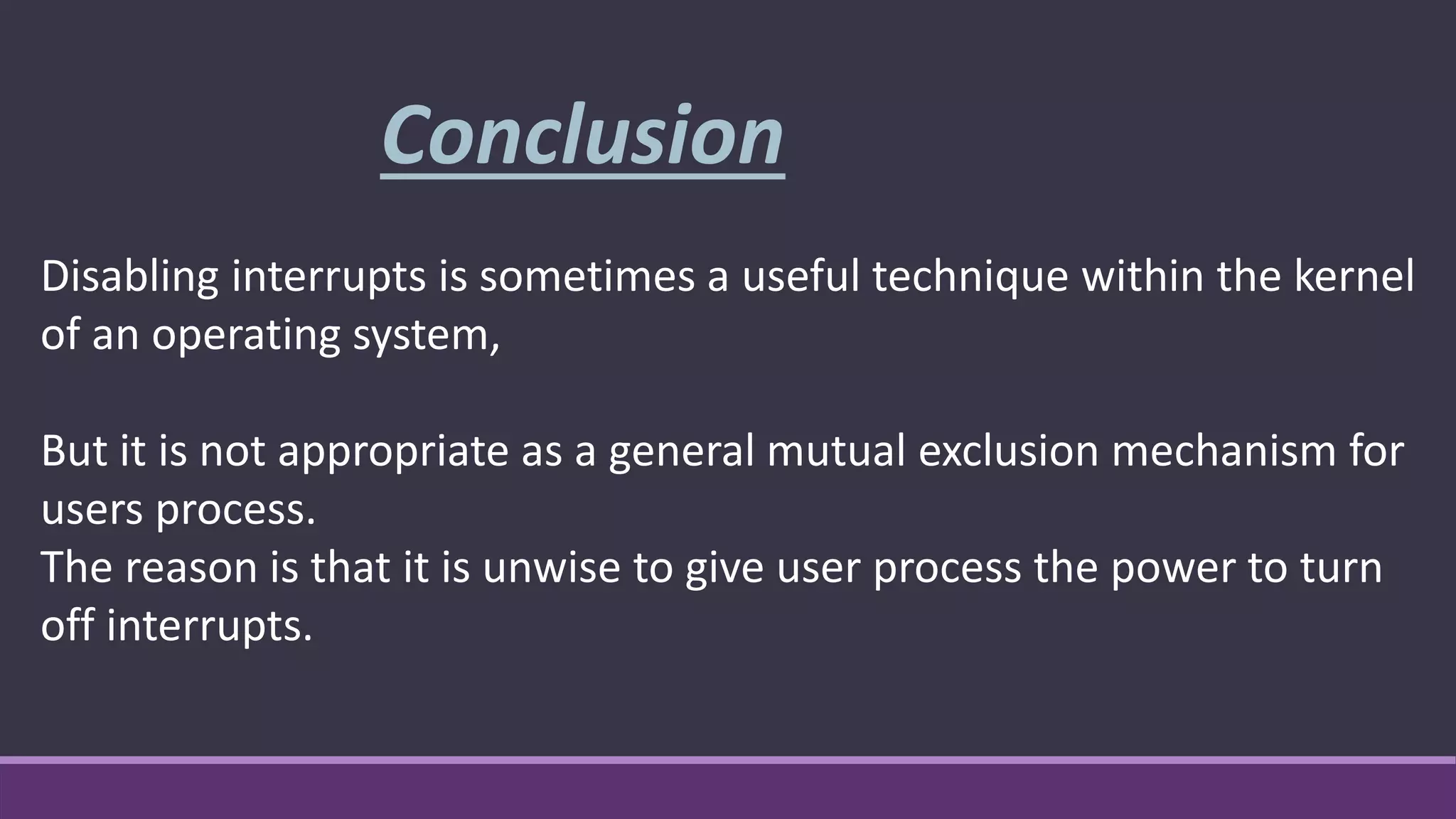
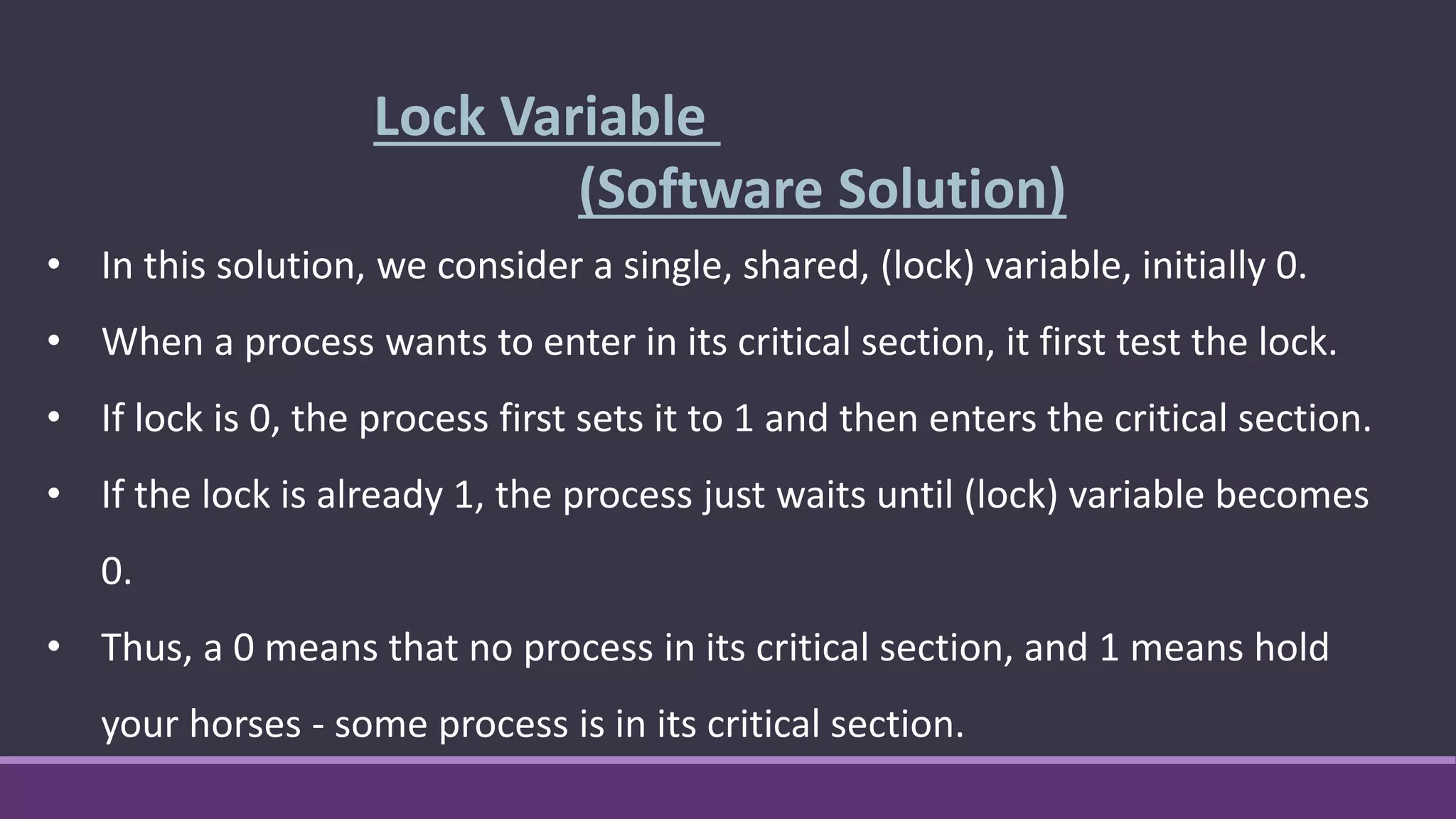
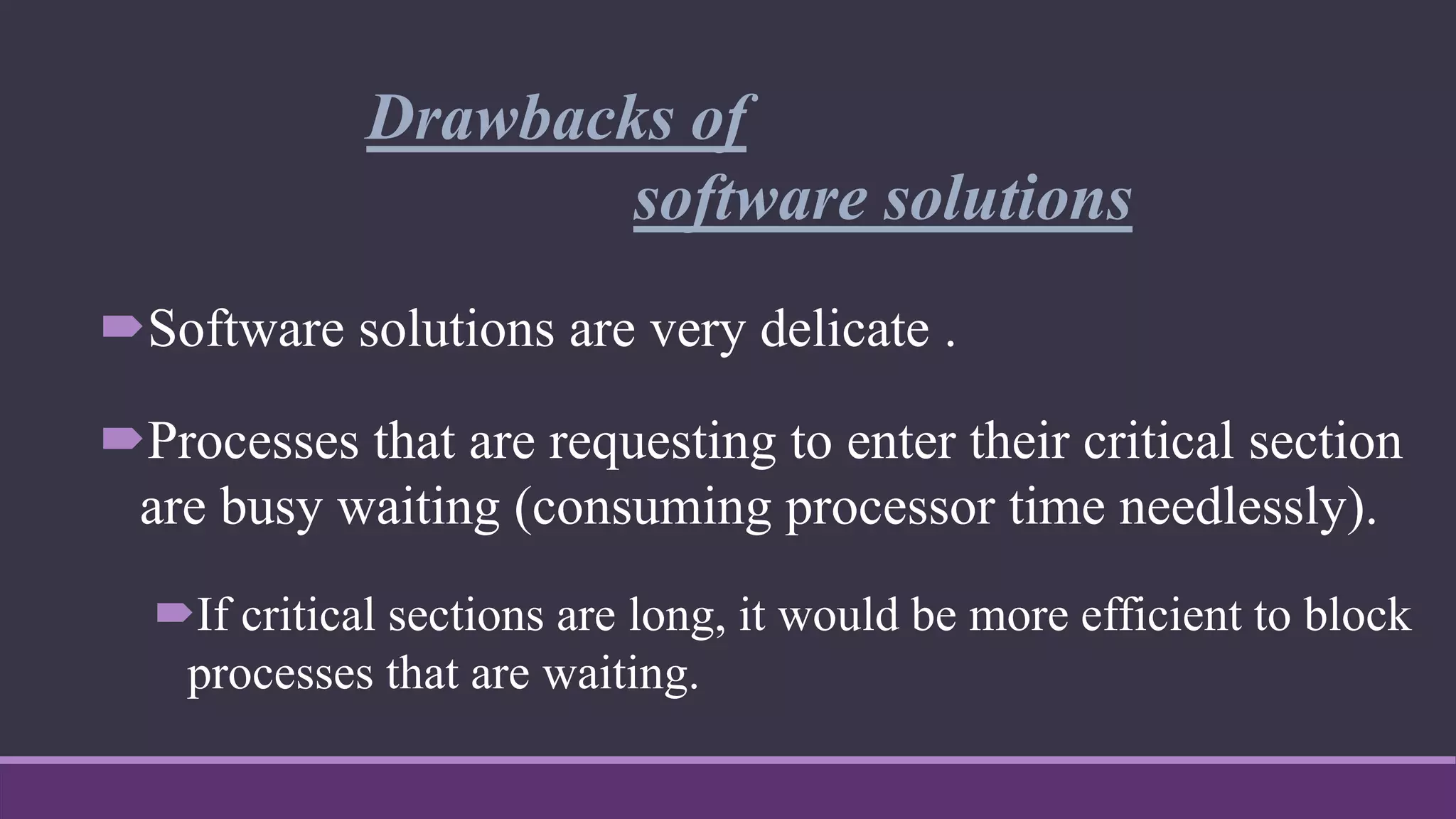
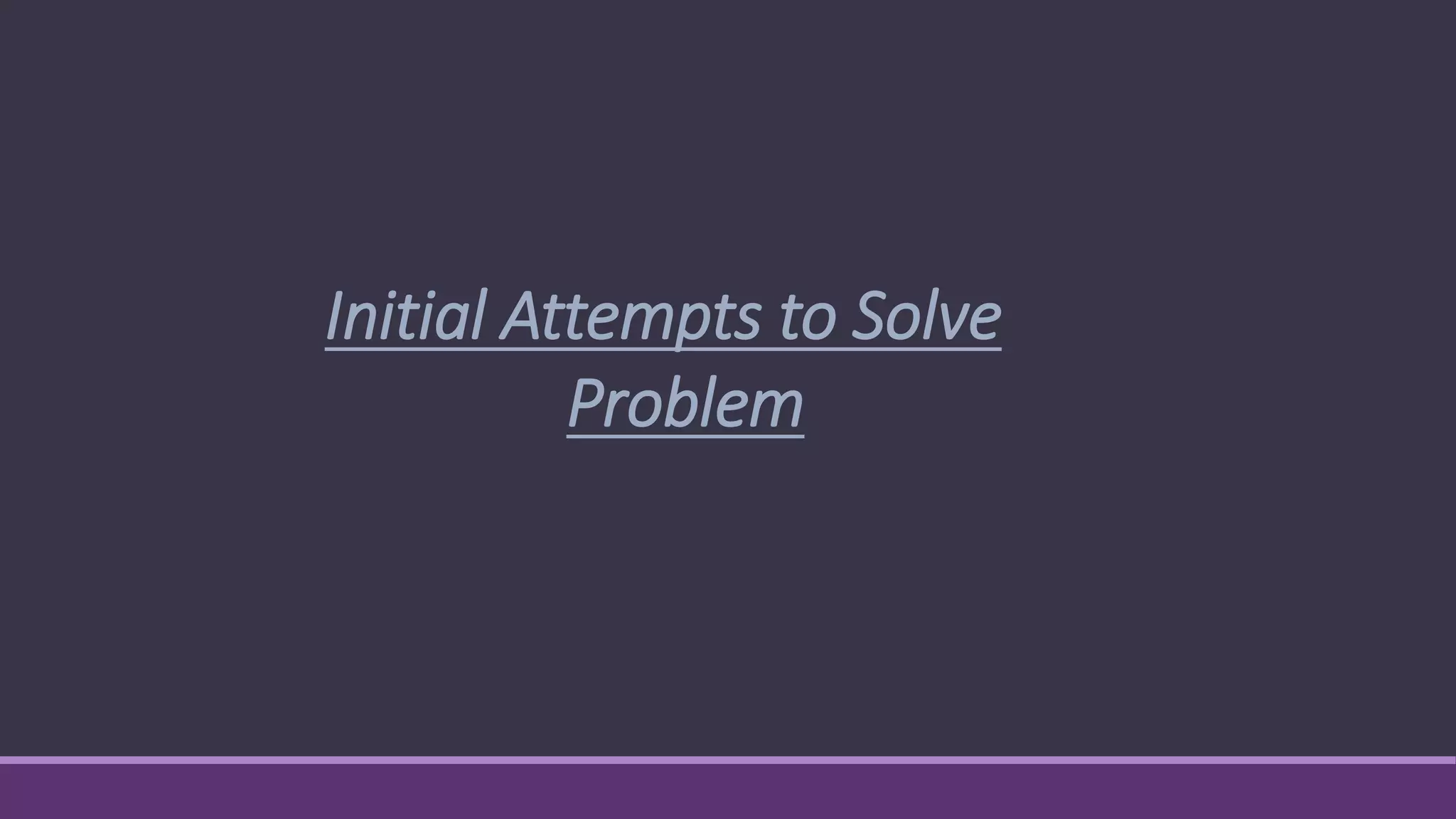
![Threads T0 and T1 use variables flag[i] and flag[j] to indicate their intention to enter their
critical section. A thread will not enter its critical section if the other thread has already
signaled its intention to enter.
boolean flag[i]=false , flag[j]=false ;
Incorrect Solution 1
T1
while (true) {
while (flag[ i ]) { ; } (1)
flag[ j ] = true; (2)
critical section (3)
flag[ j ] = false; (4)
non-critical section (5)
}
T0
while (true) {
while (flag[ j ]) { ; } (1)
flag[ i ] = true; (2)
critical section (3)
flag[ i ] = false; (4)
non-critical section (5)
}
This solution does not guarantee mutual exclusion.](https://image.slidesharecdn.com/criticalsectionproblem-160905215747/75/Critical-section-problem-in-operating-system-20-2048.jpg)


